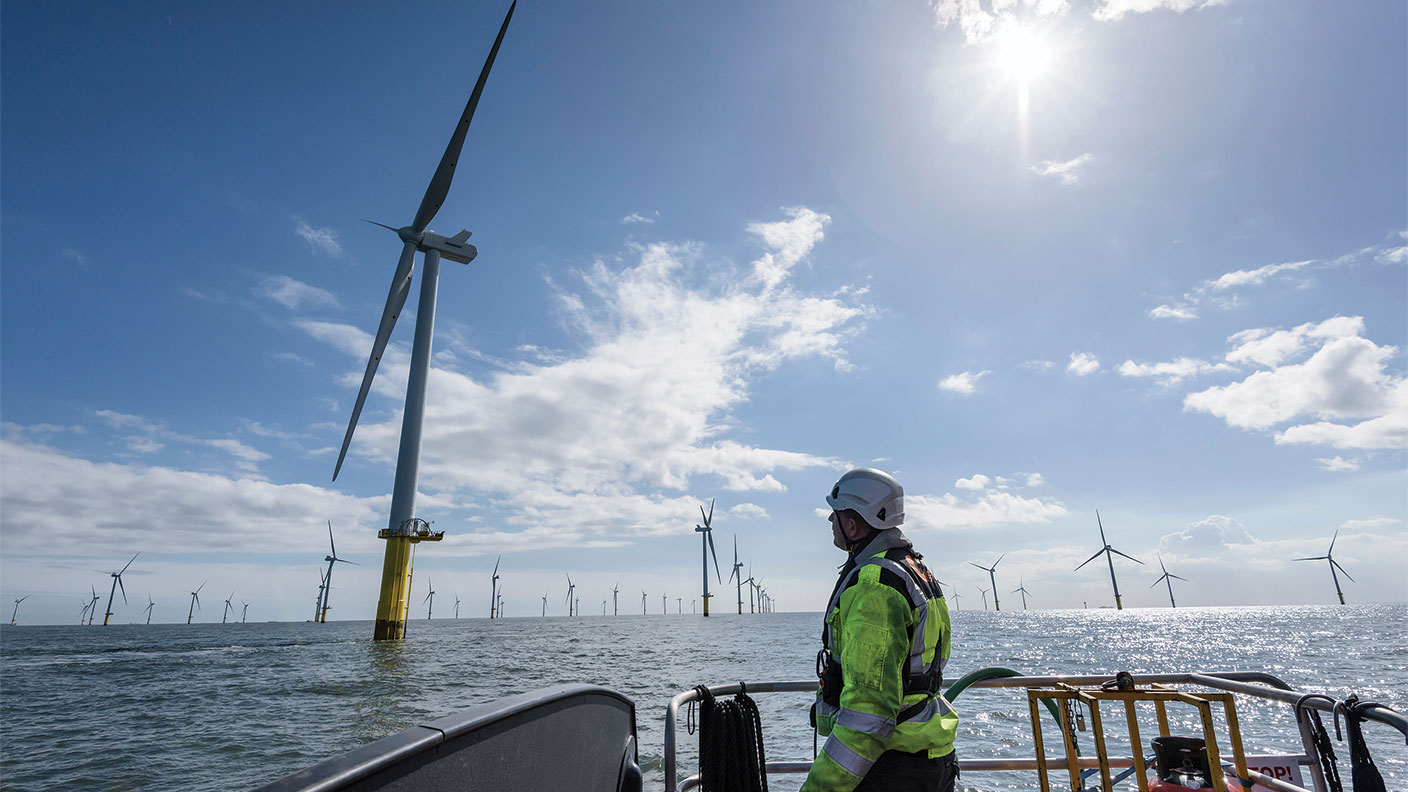Will the rise of ESG investing cause stagflation?
ESG investing is booming. But it may be contributing to today’s stagflation – slower growth and higher inflation – says Tom Traill.

Ethical investing has been around for decades. But its latest incarnation, signified by the acronym “ESG” (investing with an eye to a company’s approach to environmental and social issues, and corporate governance) only really began to gain traction in around 2018, according to search-engine queries, as measured by Google Trends. ESG investing is rather more explicit about the idea that there need not be a trade-off between “good” behaviour and attractive investment returns. Indeed, ESG investing argues that high-quality corporate governance, environmentally friendly practices and good corporate citizenship are material to the performance of financial assets.
Defining ESG investing is not easy
There is a logic to this and there has even been some discussion of whether it might be possible to calculate an ESG “factor” (ie, a set of characteristics – similar to “growth” or “value” – which tend to lead companies to outperform over the long run). However, these attempts are hindered by a lack of agreement on definitions. Indeed, there is only a faint correlation between ESG scores from major ratings agencies, indicating the lack of consensus over standards.
Of the three, “governance” is perhaps the easiest to define: it comes down to strategy, accountability and alignment. The idea that well-run companies with a record of strong capital deployment and well-established shareholders’ rights tend to perform better over the long run is neither controversial nor especially difficult to measure – so there is generally more agreement on what good governance looks like.
MoneyWeek
Subscribe to MoneyWeek today and get your first six magazine issues absolutely FREE

Sign up to Money Morning
Don't miss the latest investment and personal finances news, market analysis, plus money-saving tips with our free twice-daily newsletter
Don't miss the latest investment and personal finances news, market analysis, plus money-saving tips with our free twice-daily newsletter
The “social” component is the hardest to quantify. The scope is wide, and while working conditions, staff diversity, relationships with employees and local communities, and approaches to health and safety, for example, are all important, their precise financial impact is hard to measure. Finally, “environmental” is fairly easy to understand – it involves assessing the negative environmental impact of a company’s actions. But in practice it is hard to measure this either fully or accurately based on the information we have available from companies today. That’s a pity, as it is also the area likely to have the most material wider economic impact in the longer term.
Transition could be stagflationary
That’s because, for all the definitional difficulties, one thing is increasingly clear – the achievement of higher global ESG standards will be inflationary, and may even prove to be stagflationary (ie, slowing growth while pushing up prices). This may be the price we have to pay for more sustainable long-term economic growth – but it’s something investors need to be aware of when putting together their portfolios.
Right now, we are in the midst of a generational burst of higher inflation. There are several causes, including monetary policy, the war in Ukraine and pandemic-related disruption. One crucial fragility that the surge in prices has highlighted is the chronic underinvestment in the development of new sources of oil and other key commodities in recent years. A major driver of this has been the rise in ESG-related scrutiny, which has left companies reluctant to make the long-term investments required to exploit new oil resources (for example), for fear of being left with “stranded assets” if the law, sentiment or technology changes.
Not only are we facing higher prices, but we are at a very unusual juncture in human history in that we are exchanging one technology for a less-efficient version as we move towards the goal of “net-zero” carbon emissions. The discovery of fossil fuels and the harnessing of the high levels of energy stored therein led to an acceleration in economic growth. It stands to reason that the reverse may be true as we shift to renewables, unless further meaningful advances in technology can be achieved in a cost-effective manner. There is a close relationship between GDP growth and energy consumed, which in turn has meant a historically close relationship between GDP growth and carbon emissions (though to be fair, the data suggests that this relationship is no longer as close as it used to be).
We aren’t investing enough
Not everyone agrees with this gloomy prognosis. The “net-zero” transition is not inherently stagflationary, argues Brian Davidson, head of climate economics at Fathom Consulting. He notes that the significant levels of investment needed to make the transition should boost growth, and that renewable electricity is generally cheaper than fossil-fuel powered electricity, which could help alleviate inflationary pressures.
There’s a catch, however – this transition, says Davidson, needs to be well-managed by both policymakers and the private sector. Unfortunately, that’s not what we’re getting. Instead, on the one hand the focus on ESG has meant that investment in fossil fuels has been lower than it would otherwise have been, reducing our energy supply from these traditional sources. But “at the same time investment in renewable sources of energy and infrastructure has not been what it needs to have been to replace it”. In turn this has contributed to inflationary pressure and reduced economic growth.
ESG investing – or just growth stocks?
A global rethink of “net zero” seems unlikely at this stage. So let’s assume this is the direction of travel – a stagflationary transition away from fossil fuels that involves slightly slower growth and higher prices. How should you position your portfolio for this scenario?
You might assume that ESG investing is the way to go. After all, it has proved very popular in recent years, with an explosion of ESG-labelled products hitting the market, and for many years this approach has delivered superior investment returns. However, that’s because the low-growth, low-inflation world we’ve been stuck in since the 2008 financial crisis favoured technology and “longer-duration” (that is, assets that will only generate the majority of their cash flows further into the future) growth stocks over the more economically sensitive, heavy industrial and commodity-related names. This has favoured ESG portfolios simply because they included more of the former and very few of the latter.
More recently though, the surge in inflation and interest-rate expectations has resulted in sharp sell-offs in growth stocks and other long-duration assets, which in turn has hit the performance of once high-flying ESG funds. Meanwhile, in the same way that one could argue that US Treasuries are too expensive due to excess demand from central banks, the same argument might be made that many non-ESG-compliant assets are underpriced due to artificially reduced demand.
It’s hard to pick winners
In the long run, some renewable energy companies and others involved in the energy transition are likely to do very well. But many will fail to make the grade, as was the case during the dotcom bubble. As with many new trends, companies seem to find it easier in the early days to generate revenue than to create value.
This is one reason why some asset managers are taking a wider view of ESG. It’s not all about companies that are already making the grade – it’s also about engaging with companies that are improving. For example, Waverton Investment Management takes what it describes as “a pragmatic approach”, aiming to “identify businesses allocating capital in a responsible manner, ensuring resilience in their business model and long-term financial sustainability”.
Importantly, the approach “includes not only those companies already operating to high ESG standards, but also those on an improving trajectory and/or part of the transition solution. It is often the improvers and enablers that offer investors most value and the prospect of superior returns over time”.
Buy food, fuel and defence stocks
Disruption of supply chains will also interact with ESG investing aims to push more investment to certain sectors. As economist Peter Warburton of Economic Perspectives notes: “The ‘health and safety’ aspect of social investing has undergone a significant reinterpretation, to embrace physical, food and energy security”. Securing reliable supplies of food and fuel in a world where the old certainties of globalisation can no longer be taken for granted implies “a massive reallocation of resources to agricultural food production and global transportation. Higher food prices will be necessary to create an incentive for the cultivation of additional crops and remedy the structural damage to global food-supply chains. Investments in agricultural land, food production and transportation should be handsomely rewarded”, says Warburton. “Go with the grain!”
Perhaps ironically, some of the companies that seem best placed to benefit from a stagflationary ESG-driven transition to renewables are the oil and gas companies, where supply constraints after years of underinvestment in production capacity have been made worse by the situation in Ukraine. The recent run up in energy prices has made these companies very profitable investments, but in the longer run the well-managed ones, with strong governance standards and plans in place to manage the transition to higher environmental standards (including navigating the politics of such a transition) are likely to be the best investments.
Defence stocks have also done well in recent months, but have often been omitted in the past from ESG portfolios. For many people a well-managed defence stock is an acceptable investment and the war in Ukraine has led to something of an ethical re-evaluation of the defence sector (which again indicates how tricky it is to define exactly what is ESG investing and what isn’t).
Despite the many criticisms, ESG investment, under whatever guise it adopts in the future, seems set to stay. But for now, investing in companies that are part of the energy transition seems to be a better course of action than blindly buying companies based on nothing more than a strong ESG rating. Likewise, companies with inflation-linked income or real assets (such as farmland, for example) seem worth being exposed to if we are to see a period of prolonged stagflation.
Get the latest financial news, insights and expert analysis from our award-winning MoneyWeek team, to help you understand what really matters when it comes to your finances.
-
 The best and worst performing UK stocks of 2025 as FTSE 100 approaches record year
The best and worst performing UK stocks of 2025 as FTSE 100 approaches record yearThe blue-chip index is heading for another top year despite investors steering clear of UK equity funds
-
 Which sectors are best to invest in for 2026?
Which sectors are best to invest in for 2026?Investment trust portfolio managers give their views on the sectors and regions they expect to outperform in 2026.
-
 Halifax: House price slump continues as prices slide for the sixth consecutive month
Halifax: House price slump continues as prices slide for the sixth consecutive monthUK house prices fell again in September as buyers returned, but the slowdown was not as fast as anticipated, latest Halifax data shows. Where are house prices falling the most?
-
 Rents hit a record high - but is the opportunity for buy-to-let investors still strong?
Rents hit a record high - but is the opportunity for buy-to-let investors still strong?UK rent prices have hit a record high with the average hitting over £1,200 a month says Rightmove. Are there still opportunities in buy-to-let?
-
 Pension savers turn to gold investments
Pension savers turn to gold investmentsInvestors are racing to buy gold to protect their pensions from a stock market correction and high inflation, experts say
-
 Where to find the best returns from student accommodation
Where to find the best returns from student accommodationStudent accommodation can be a lucrative investment if you know where to look.
-
 The world’s best bargain stocks
The world’s best bargain stocksSearching for bargain stocks with Alec Cutler of the Orbis Global Balanced Fund, who tells Andrew Van Sickle which sectors are being overlooked.
-
 Revealed: the cheapest cities to own a home in Britain
Revealed: the cheapest cities to own a home in BritainNew research reveals the cheapest cities to own a home, taking account of mortgage payments, utility bills and council tax
-
 UK recession: How to protect your portfolio
UK recession: How to protect your portfolioAs the UK recession is confirmed, we look at ways to protect your wealth.
-
 Buy-to-let returns fall 59% amid higher mortgage rates
Buy-to-let returns fall 59% amid higher mortgage ratesBuy-to-let returns are slumping as the cost of borrowing spirals.